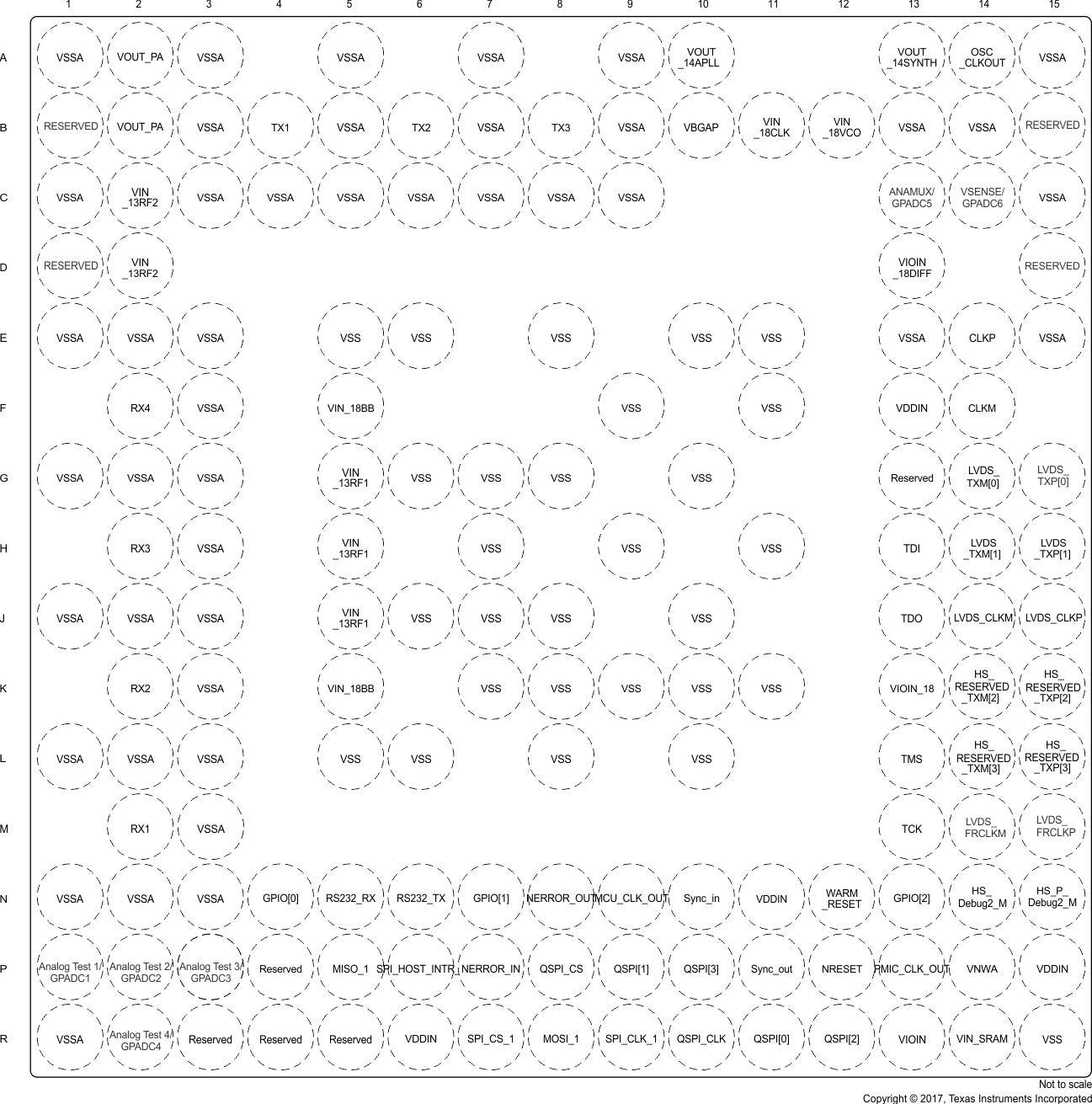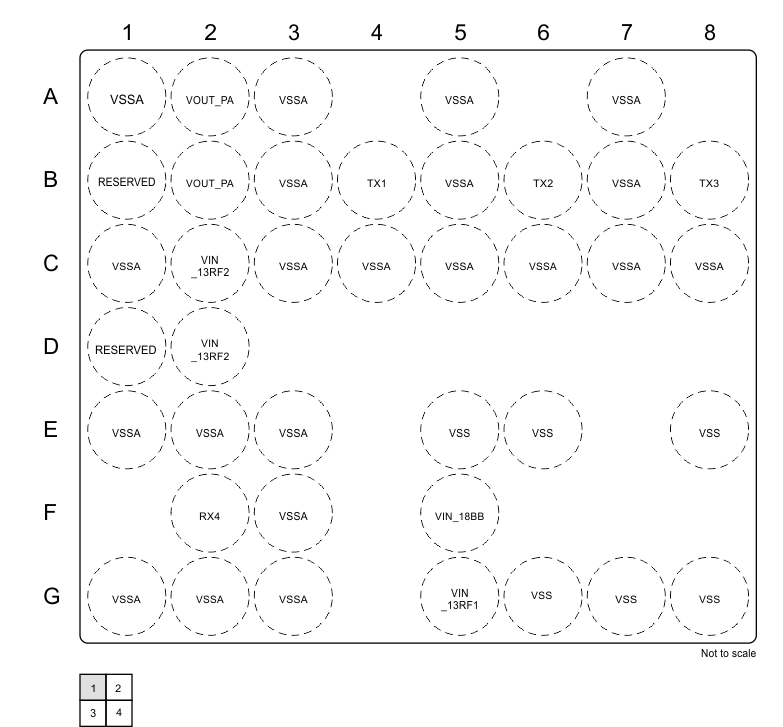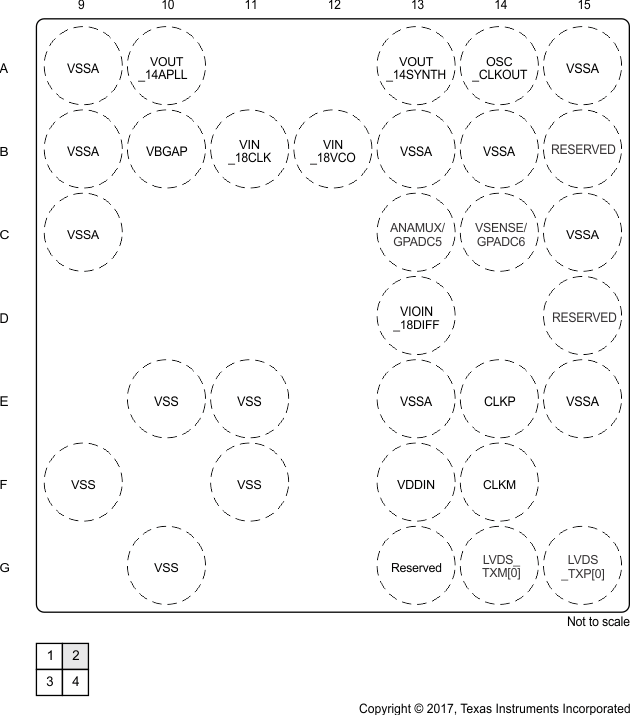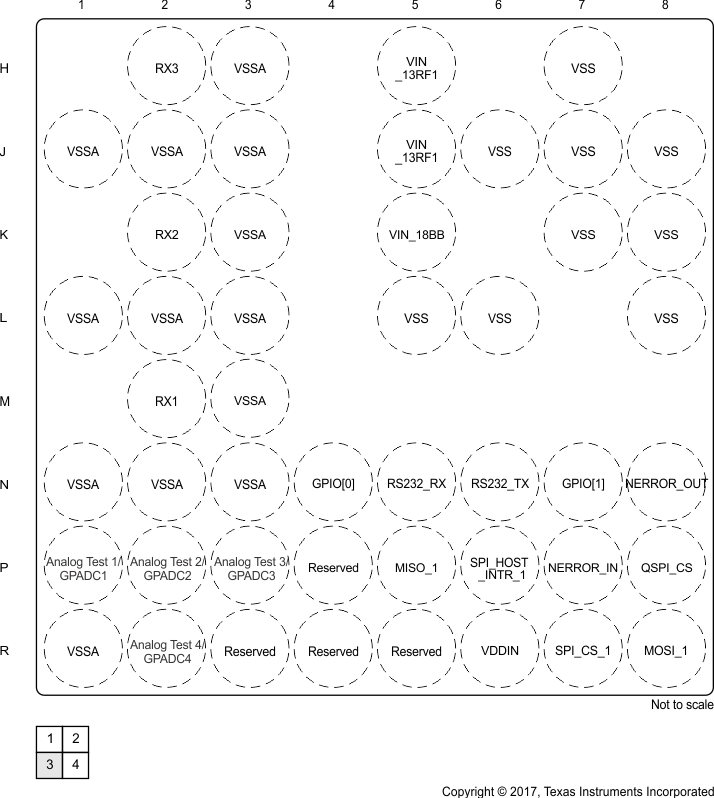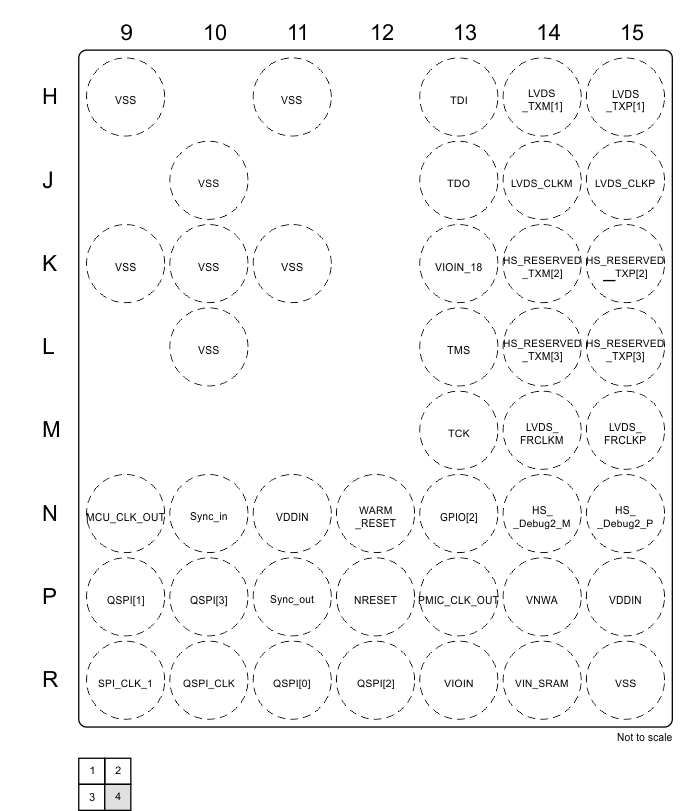SWRS202C May 2017 – January 2022 AWR1443
PRODUCTION DATA
- 1 Features
- 2 Applications
- 3 Description
- 4 Functional Block Diagram
- 5 Revision History
- 6 Device Comparison
- 7 Terminal Configuration and Functions
-
8 Specifications
- 8.1 Absolute Maximum Ratings
- 8.2 ESD Ratings
- 8.3 Power-On Hours (POH)
- 8.4 Recommended Operating Conditions
- 8.5 Power Supply Specifications
- 8.6 Power Consumption Summary
- 8.7 RF Specification
- 8.8 Thermal Resistance Characteristics for FCBGA Package [ABL0161]
- 8.9
Timing and Switching Characteristics
- 8.9.1 Power Supply Sequencing and Reset Timing
- 8.9.2 Synchronized Frame Triggering
- 8.9.3 Input Clocks and Oscillators
- 8.9.4
Multibuffered / Standard Serial Peripheral Interface (MibSPI)
- 8.9.4.1 Peripheral Description
- 8.9.4.2
MibSPI Transmit and Receive RAM Organization
- 8.9.4.2.1 SPI Timing Conditions
- 8.9.4.2.2 SPI Controller Mode Switching Parameters (CLOCK PHASE = 0, SPICLK = output, SPISIMO = output, and SPISOMI = input) (1) (1) (1)
- 8.9.4.2.3 SPI Controller Mode Switching Parameters (CLOCK PHASE = 1, SPICLK = output, SPISIMO = output, and SPISOMI = input) (1) (1) (1)
- 8.9.4.3 SPI Peripheral Mode I/O Timings
- 8.9.4.4 Typical Interface Protocol Diagram (Peripheral Mode)
- 8.9.5 LVDS Interface Configuration
- 8.9.6 General-Purpose Input/Output
- 8.9.7 Controller Area Network Interface (DCAN)
- 8.9.8 Serial Communication Interface (SCI)
- 8.9.9 Inter-Integrated Circuit Interface (I2C)
- 8.9.10 Quad Serial Peripheral Interface (QSPI)
- 8.9.11 JTAG Interface
- 9 Detailed Description
- 10Applications, Implementation, and Layout
- 11Device and Documentation Support
- 12Mechanical, Packaging, and Orderable Information
